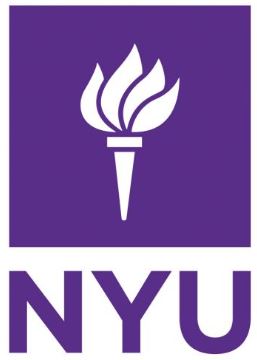La Vara - לה בארה (ניו יורק)
1922
1923
1924
1925
1926
1927
1928
1929
1930
1931
1932
1933
1934
1935
1936
1937
1938
1939
1940
1941
1942
1943
1944
1945
1946
1947
1948
 Searching...
Searching...About this newspaper
Published weekly on New York’s Lower East Side from 1922-1948, La Vara (“The Stick”) was the longest running Ladino newspaper in the United States. Founded as a satirical tabloid by the Salonican-born journalist and educator Albert D. Levy (c. 1897-1962), La Vara aimed to expose hypocrisy — in the Sephardic community, in American politics, and beyond. “Take this stick in your hand,” its original Hebrew and Ladino masthead self-referentially declared, “and no hypocrite will remain in your city!” Alongside Levy at La Vara’s helm was fellow Salonican Moïse B. Soulam (1890-1967), assistant editor and advice columnist extraordinaire. While the pair launched and wrote for other Ladino newspapers before and throughout La Vara’s publication, the latter was their greatest and most enduring journalistic achievement.
In addition to their editorial enterprise, Levy and Soulam pursued other noteworthy projects. In 1914, Soulam and Maurice Nessim (1892-1964), another Salonican transplant and Ladino journalist, formed the first Levantine Jewish (or Turkino) socialist group in New York. In 1916, this became the Sephardic Socialist Federation. Levy, for his part, sojourned in Seattle, Washington to head the local Sephardic Talmud Torah (religious school) from 1931-1934, all while maintaining his editorial post.
Like most American Ladino newspapers, La Vara advocated for the development of the nascent Sephardic community in the United States. From 1880-1924, fifty to sixty thousand Ladino-speakers from the Ottoman Empire had immigrated to the United States and over half of them wound up in New York. These Ottoman Jewish émigrés formed the basis of a new American Ladino reading public; four years after its debut, La Vara had a circulation of 9,000, and a year later that number had reached 16,000. Women and men alike contributed pieces; letters to the editor evince a national readership from New Brunswick to Seattle. Awareness of La Vara even extended to Levy and Soulam’s native city: the pair claimed that Ladino newspapers in Salonica were plagiarizing content from their American Ladino paper.
La Vara’s greatest competitor was La Amerika, the first Ladino periodical printed in the United States, edited and founded by the Bulgarian-born Moïse S. Gadol (1874-1941). In fact, both Soulam and Levy had been writers for La Amerika before launching La Vara. According to Gadol, though, Soulam and Levy’s departure was less than professional. In a series of accusations leveled against them in La Amerika, Gadol claimed that his erstwhile employees had stolen his subscriber list to launch their own paper. Recent scholarship has also highlighted the papers’ political differences as a component of the dispute. La Amerika maintained a more moderate approach and especially avoided any harsh critiques of structural inequalities present in the United States. La Vara, on the other hand, was quick to identify these issues and could be fairly radical, regularly declaring a socialist stance. From 1922-1925, the pages of both papers recorded the protracted dispute between the editors, which ultimately resulted in a lawsuit. Even the Sephardic Brotherhood of America, the leading Sephardic mutual aid and burial society in the United States, became involved in the case. Gadol accused the Brotherhood of using La Vara as its personal mouthpiece; when the Brotherhood retaliated (on the pages of La Vara), Gadol dragged representatives from the organization to court. The case was finally settled in the spring of 1925, but the legal fees that Gadol incurred left him financially strapped. La Amerika shuttered just months later, while La Vara persisted for over two more decades.
La Vara underwent a tonal and thematic transformation that began in August of 1934 when the paper incorporated an English section — an addition reflective of Sephardim’s increasing familiarity with the language. In 1935, the once illustrated and jovial Hebrew-letter masthead switched to English characters, and the paper was framed primarily as a source of world news instead of a largely satirical tabloid. Scholars have attributed this shift to two factors: the lingering effects of the Great Depression on readers’ interests (news became preferable to satire), and Soulam’s departure.
La Vara’s diverse content and style has led some scholars to deem it the most creative Ladino newspaper printed in the United States. In early editions, humorous stories intended for pasatiempo (“passing the time”), exaggerated caricatures, and satirical poems — many of which treat especially controversial topics — are foregrounded. News articles are relegated to the back. Later installments showcase the expansion of La Vara’s purview as it reported extensively on events locally and overseas. The most pressing political and social issues are debated across its pages, including the merits of socialism, the challenges of Zionism and Sephardic-Ashkenazi cooperation, the state of Jewish education, and more. Full issues are devoted to upcoming Jewish holidays. Many also feature essays and poems on Jewish historical events penned by Levy himself. Both of these elements highlight the paper’s often didactic nature and Levy’s ingenuity as an educator. Even the advertisements are incredibly rich, offering unparalleled representation of Sephardic-owned businesses on the Lower East Side and insight into the everyday wants and needs of Sephardic consumers. It is La Vara’s incredible breadth — in content, form, and style alike — that render it an invaluable window into the lives of Sephardim in the United States in the early twentieth century.
Makena Mezistrano
This newspaper is brought to you thanks to:









Tags